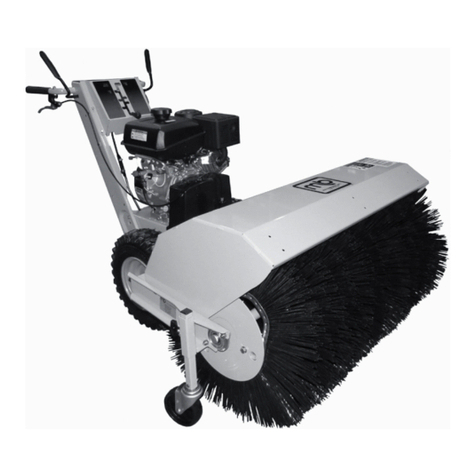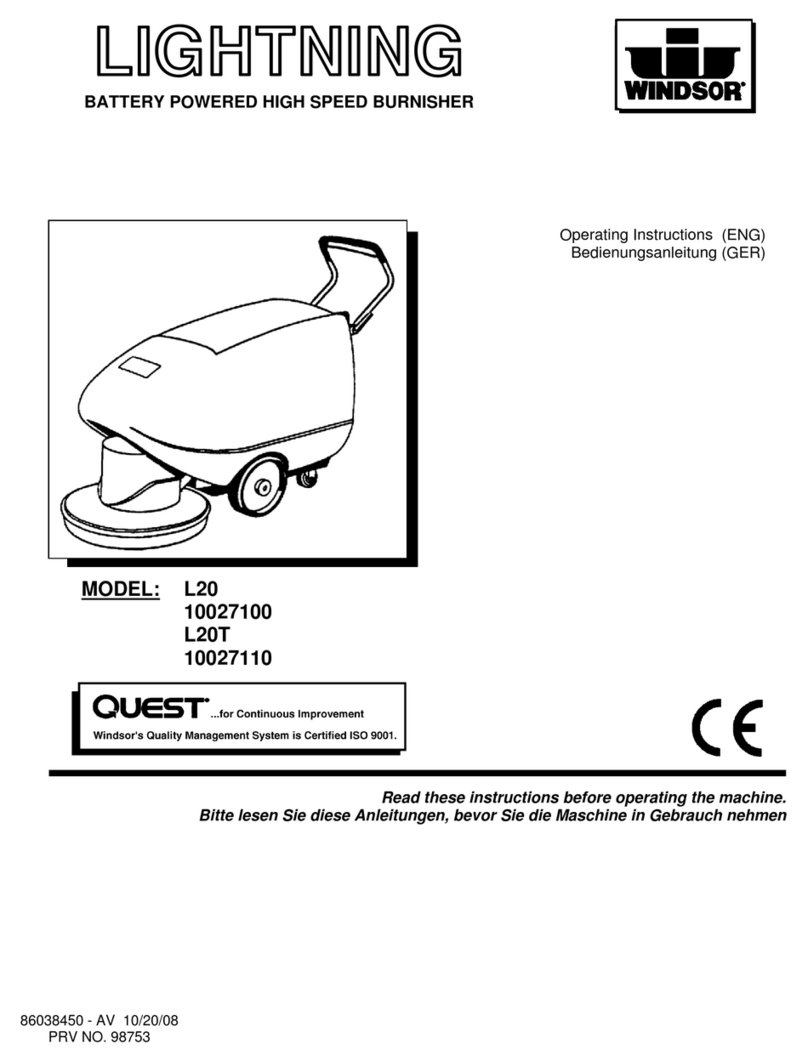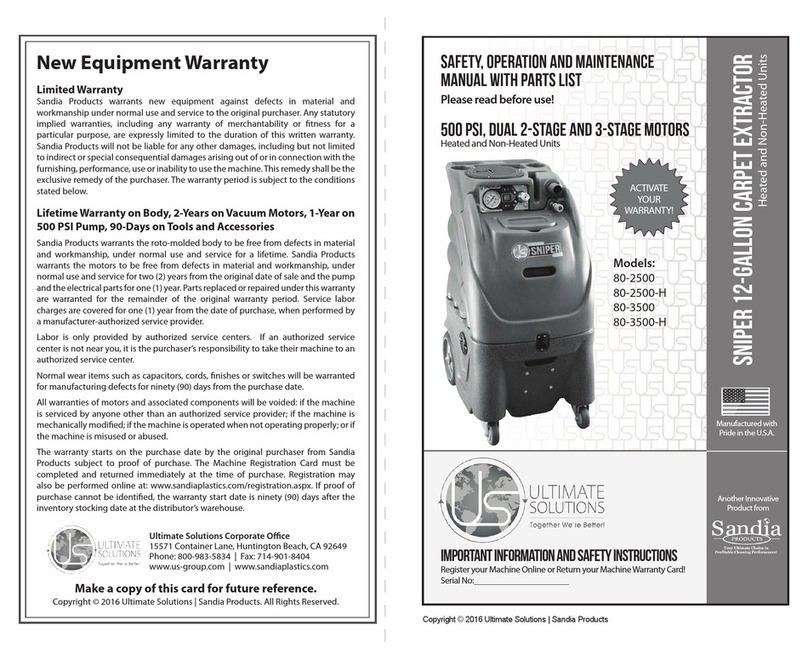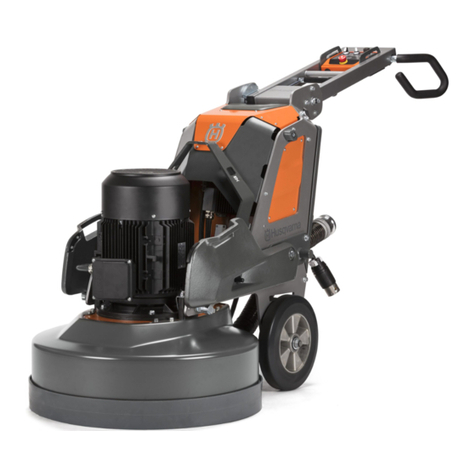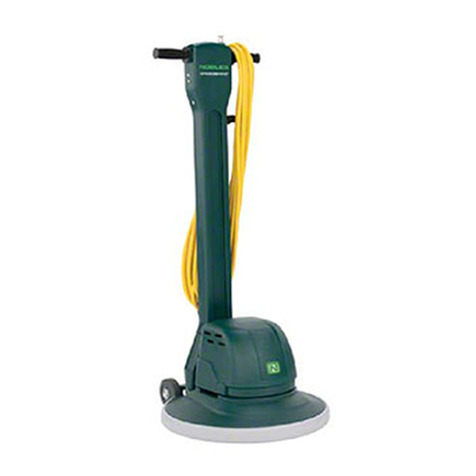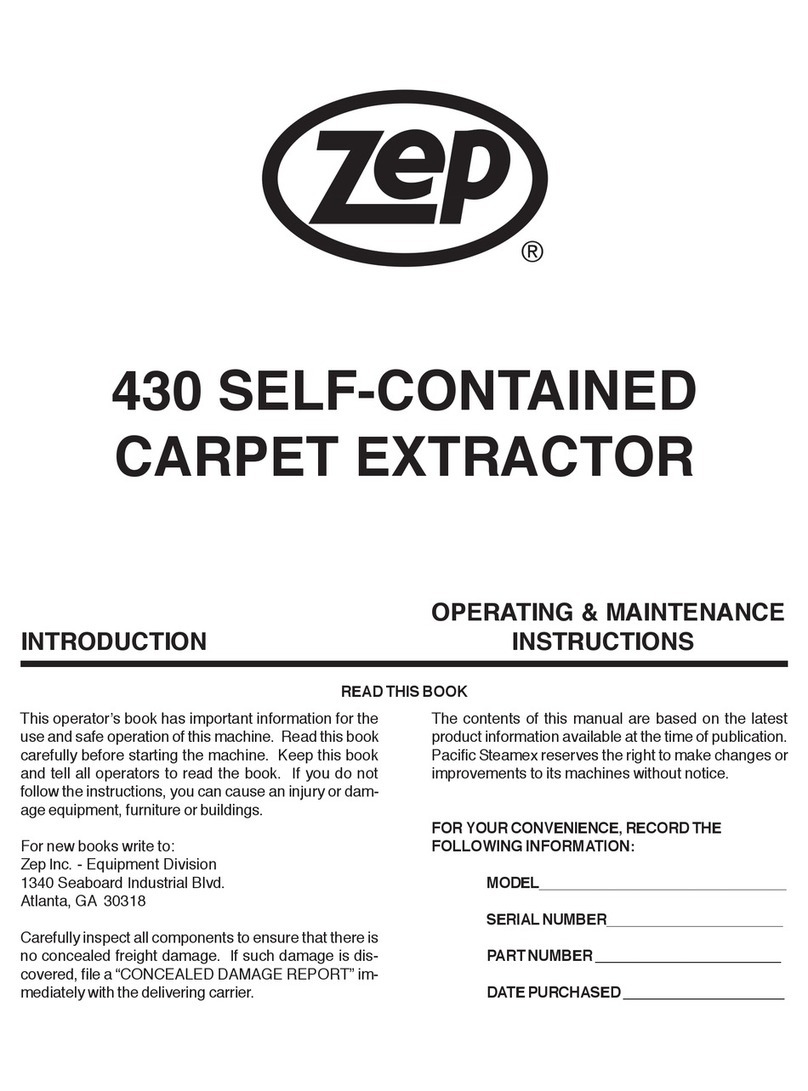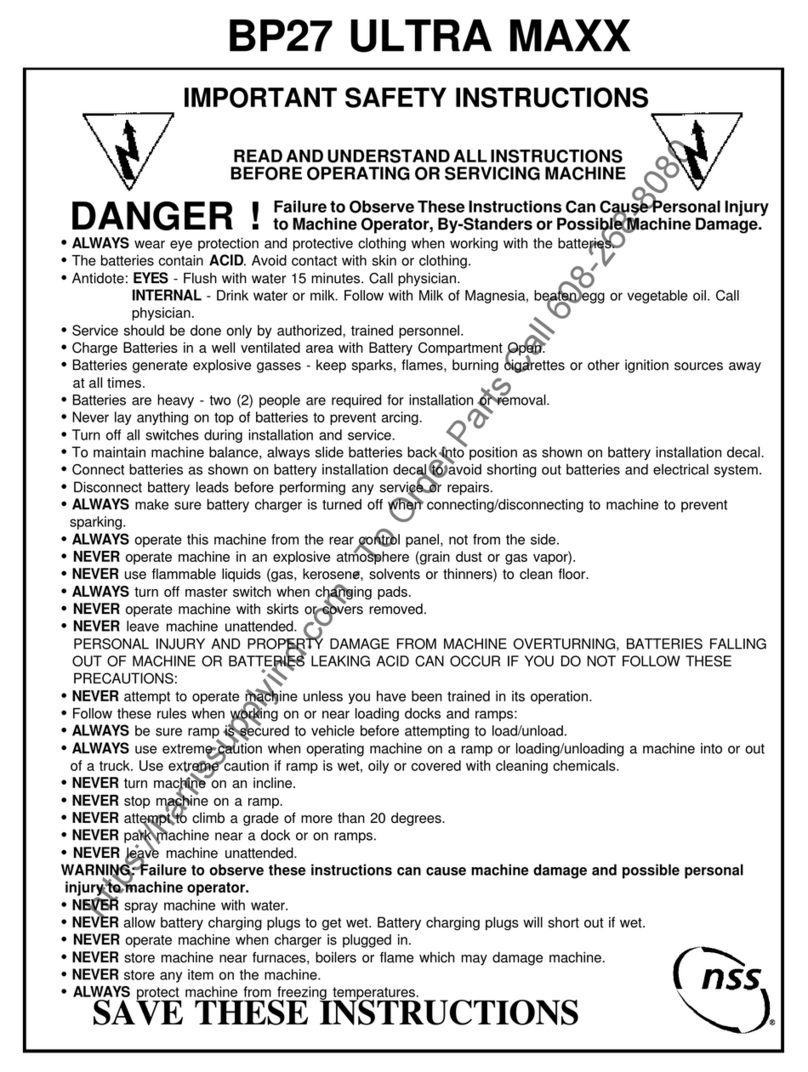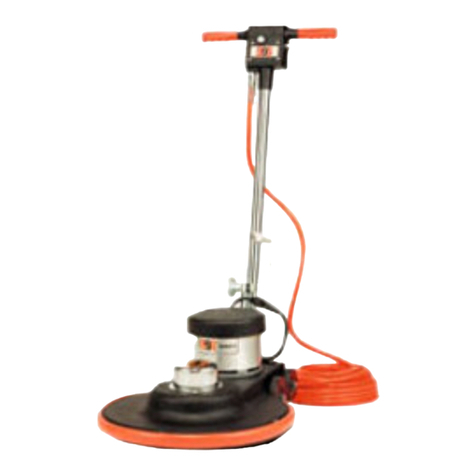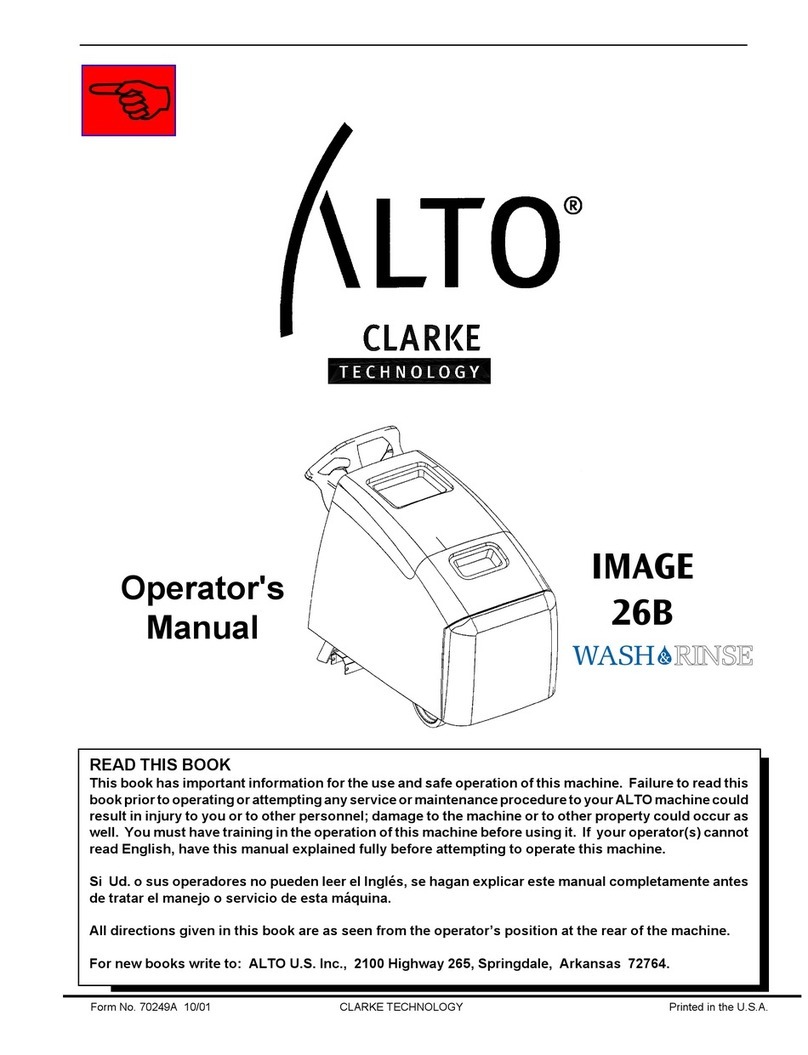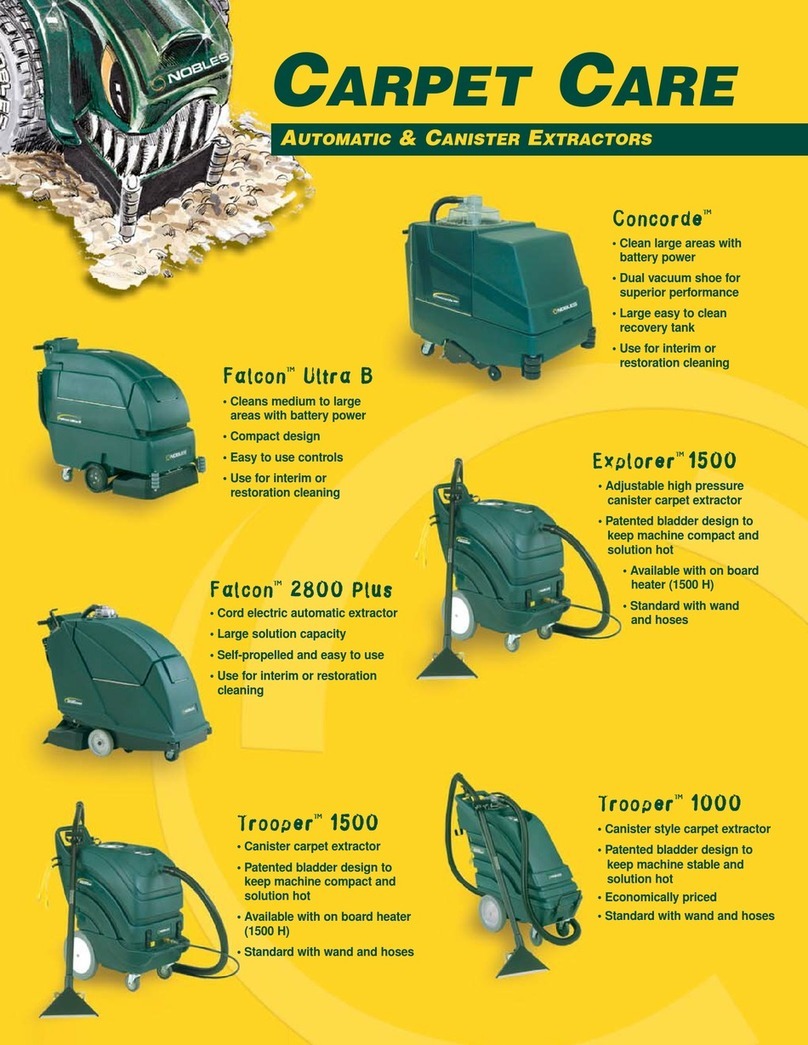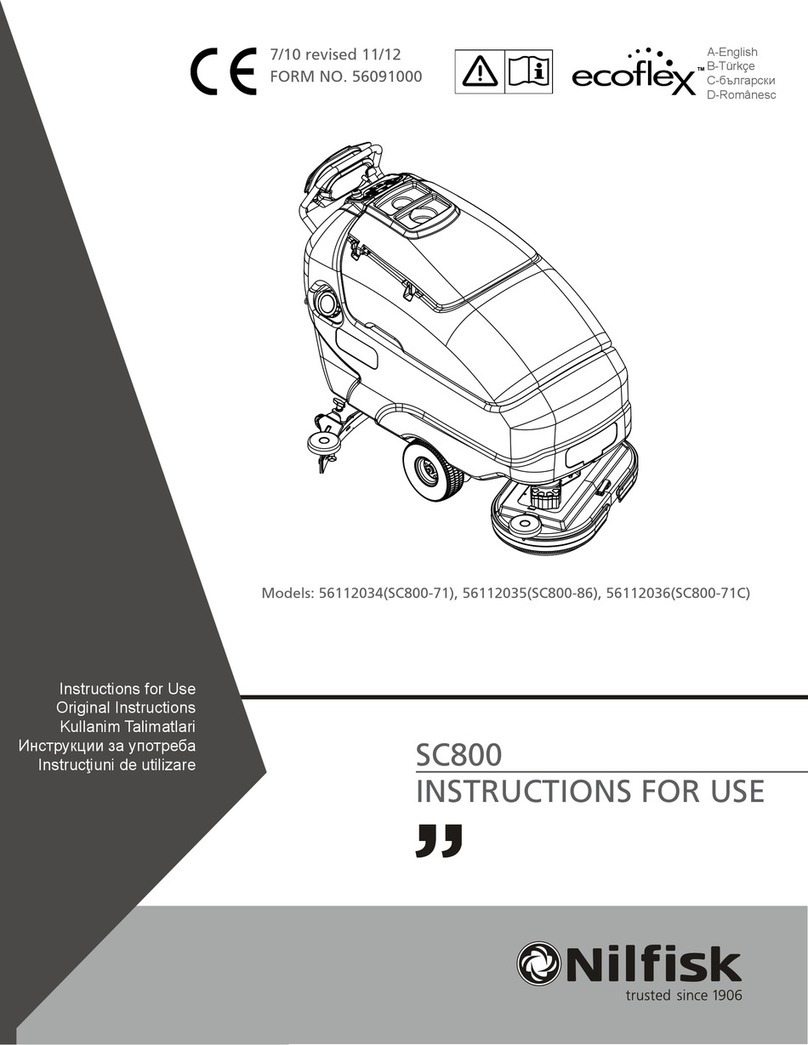
FCS16 RIP-R-STRIPPER
FORM GOM4240301, VERSION 3.1 7
might be aggravated by strenuous work, check with
your doctor BEFORE operating the RIP-R-STRIPPER.
Guard against the possibility of back related injuries.
Always lift the RIP-R-STRIPPER with leg muscles and
not with the back.
6) Prolonged use of the RIP-R-STRIPPER (or other,
similar machines) exposes the operator to vibrations
which may produce Whitefinger Disease (Raynaud’s
Phenomenon). This phenomenon reduces the hand’s
ability to feel and regulate temperature, produces
numbness and burning sensations and may cause
nerve and circulation damage and tissue necrosis.
Antivibration systems do not guarantee that you will
not sustain Whitefinger Disease. Therefore,
continuous and regular users should closely monitor
the condition of their hands and fingers. After each peri-
od of use, exercise to restore normal blood
circulation. If any of the symptoms appear, seek
medical advice immediately.
7) Clothing must be sturdy and snug fitting, but allow
complete freedom of movement. Never wear loose
fitting jackets, scarves, neckties, jewelry, flared or
cuffed pants or anything that could become caught on
controls or moving parts. Wear long pants to protect
your legs. Protect your hands with heavy duty, nonslip
gloves to improve your grip. Good footing is most
important when operating the RIP-R-STRIPPER. Wear
sturdy boots with nonslip soles. Steel-toed safety
shoes are highly recommended. Keep shoes properly
laced. Never wear tennis shoes or other, similar type
shoes which afford little or no protection. Wear an
approved safety hard hat to protect the operator’(s’)
head(s) where there is a danger of head injuries.
Noise, generated by the operation of the RIP-R-
STRIPPER and the actual process itself, can damage
your hearing. Wear approved sound barriers (ear plugs
or ear mufflers) to protect your hearing. Continuous
and regular operators should have their hearing
checked regularly.
8) Visually inspect the RIP-R-STRIPPER, blade(s), and
accessories for damaged or worn parts. Check for
loose and/or broken parts. Determine that operator
controls work freely, all safety devices are operative
and information/safety decals are readable. Check to
determine that the RIP-R-STRIPPER and all related
accessories are in good mechanical condition
BEFORE utilization.
9) The RIP-R-STRIPPER and related accessories are
not classified as being insulated. Contact with electrical
cables, gas lines and other hazardous items can result
in electrocution and/or an explosion.
10) Know how the controls operate. Know how to stop
the motor quickly in an emergency. Always start the
motor according to the instructions as outlined in this
manual to minimize the possibility of unexpected or
uncontrolled blade/accessory oscillation. Unexpected
blade/accessory rotation can cause loss of machine
control, and the possibility of property damage and/or
personal injury.
11) Never exceed the recommended capacities of the
RIP-R-STRIPPER. Refer to the Specifications
section of this manual for more detailed information.
Always utilize the correct blade and extension cord
designed for use with the RIP-R-STRIPPER. Use of an
incorrect blade or extension cord can result in property
damage and/or personal injury.
OPERATION.
1) Give complete and undivided attention to the job at
hand. Do not chew gum, smoke and/or use smokeless
tobacco while utilizing the RIP-R-STRIPPER. Do not
attempt to eat and/or drink while utilizing the RIP-R-
STRIPPER. Determine that eyeglasses, hearing aid
devices and other medical related devices are properly
secured. Keep shoes properly laced. Use of the RIP-
R-STRIPPER is strenuous and causes fatigue. Help
prevent the cause of an accident. Plan to take work
breaks as required to help maintain proper mental and
physical alertness.
2) The RIP-R-STRIPPER is not sealed or insulated. Do
not operate the RIP-R-STRIPPER in an explosive
atmosphere or near combustible materials. Refer to
current OSHA rules and regulations.
3) The RIP-R-STRIPPER is designed for use by one
operator. Use of the RIP-R-STRIPPER by more than
one operator can lead to confusion and loss of control,
resulting in property damage and/or personal injury.
Never operate the RIP-R-STRIPPER with an improper
number of operators. Such a configuration can result in
property damage and/or personal injury. If it is felt that
more than one person is required to furnish additional
“force” to the blade, STOP and contact the Customer
Service Department for specific operational and
service/maintenance information. There is no charge
for this service.
4) Do not operate the RIP-R-STRIPPER with onlookers
close by. Caution all onlookers to stand clear. The
coverings removal process can result in flying particles
being emitted at high velocity and striking the operator
and/or onlookers. This can lead to the
possibility of property damage and/or personal injury.
Keep all body parts, loose clothing and foreign objects
clear of the oscillating blade/accessory.





















